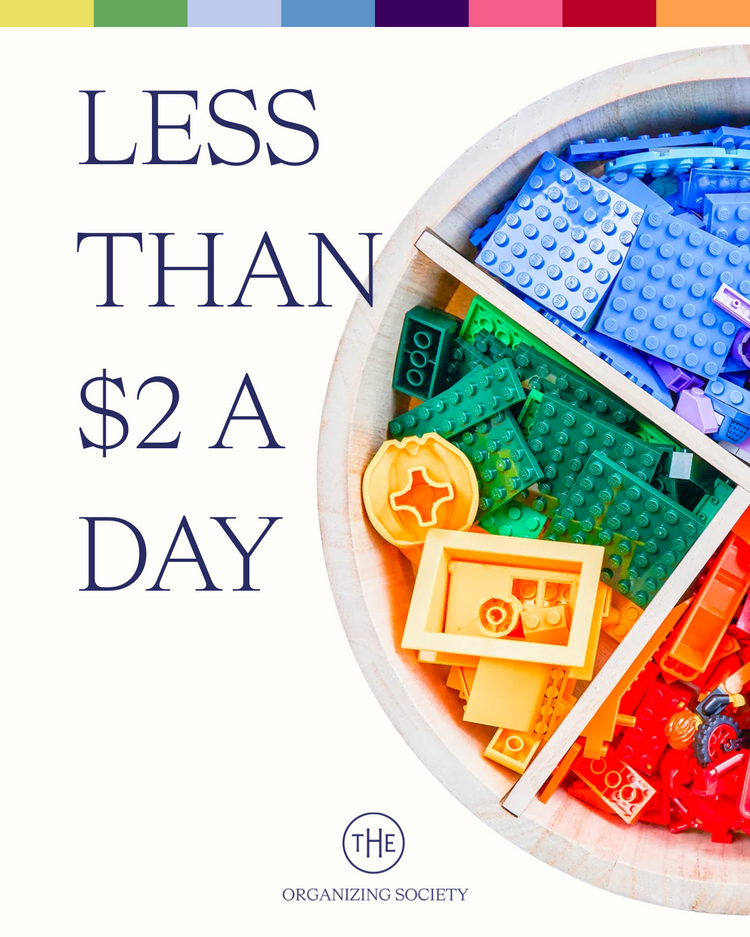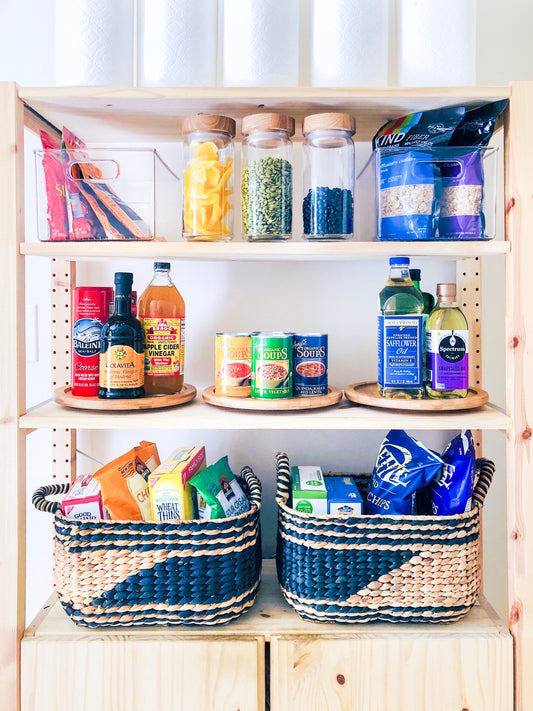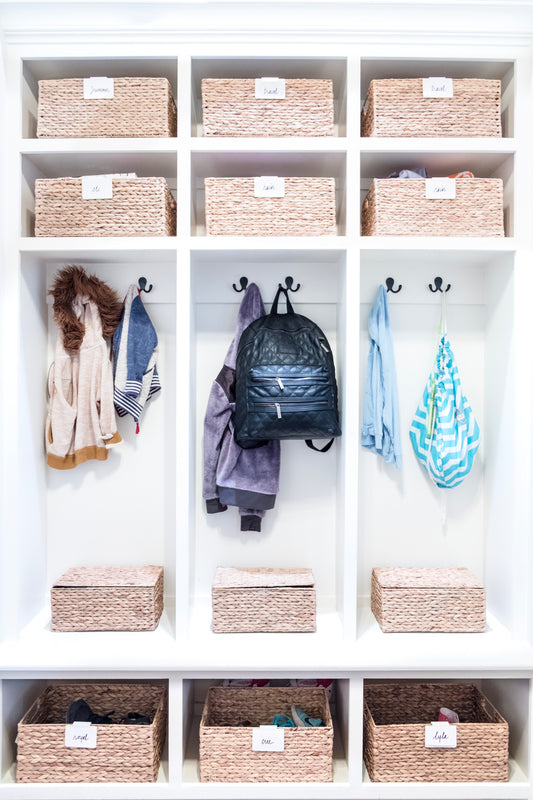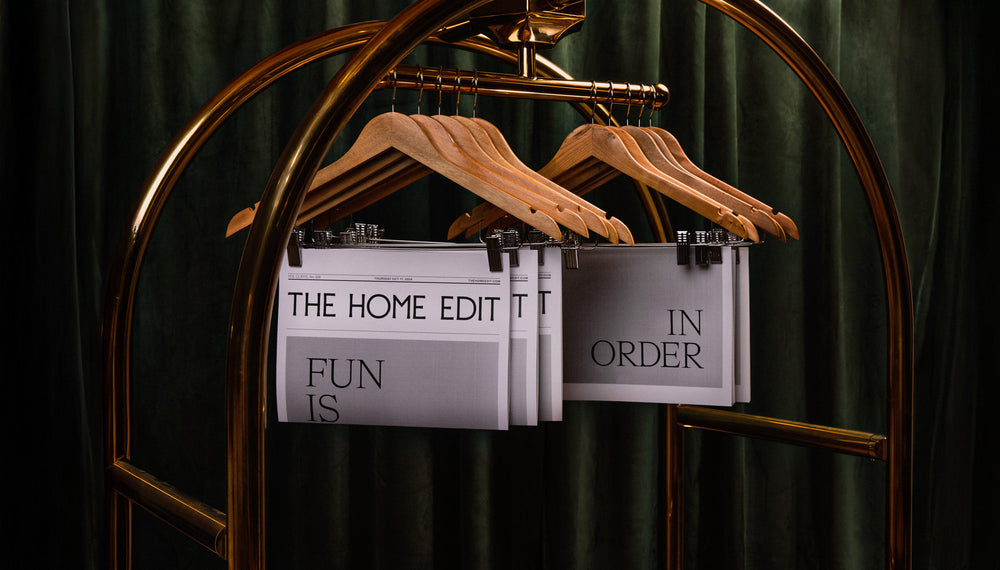Between the Barbie shoes, glitter glue, puzzle pieces, and toys your kid swore they couldn’t live without (then immediately forgot about), playrooms can go from fun to frantic fast.
That’s why we sat down with our friends Ea and Meg, the sister duo behind The Tidy Home Nashville and founding members of The Organizing Society—our app for organizing professionals and enthusiasts—to talk about what actually works when it comes to creating kid-friendly systems. It’s not about making the space picture-perfect. It’s about making it livable (and clean-up-able) for the people who actually use it.
Here’s what we’ve learned from each other—tips, tricks, and honest mom truths included.
Tip 1: Accept the mess, but make sure it has a way back
“Most people think, ‘Oh well, my kids will just mess it up, so why try?!’” Meg told us. “But kids love structure, they love to see everything they have, and they love labels! Even if it gets messy—which it 100% will—if you have a system in place, you can always get it back.”
Tip 2: Keep the safe stuff low and the scary stuff high
When you’re organizing a playroom, shelf placement matters a lot. The goal? Make it easy for your kids to grab the things they love, and just as easy to avoid the things that require supervision (or a mop).
“We love keeping favorite items low and messy items high,” Ea and Meg shared. “You don’t want your kids coloring with permanent markers while you’re cooking dinner—store those higher out of reach! And if there’s a really big age gap, we love using wall organizers to store arts and crafts so maybe your 10-year-old can reach them, but your 2-year-old can’t.”
In other words: access doesn’t mean all-access. Be the bouncer of your own playroom.
Tip 3: Use cube systems to create zones
Whether you have one kid or five, zones are your best friend. Tidy Home swears by cube shelving, especially the white ones from IKEA.
“Eight cubbies, endless possibilities,” says Meg. “We’ll often split them between kids—left side for one, right side for the other. Everything’s categorized, labeled, and they know what’s theirs.”
Simple, smart, and zero sibling fights about whose stuff is whose? Say less.
Tip 4: No playroom? No problem
Just because your home doesn’t have a dedicated playroom doesn’t mean it can’t have organized toys. You just have to get creative.
“If parents don’t want toys in their kiddo’s room, the next best space is the living room,” Ea said. “You can tuck a cube system behind the couch and bring in some baskets to organize everything.”
Basically, it’s less about where the toys live and more about how you contain them.
Tip 5: Be strategic about storage solutions
We all have our favorite storage categories, and for good reason. Certain items need specific solutions or they’ll take over your life. Here’s how Ea and Meg break it down:
- LEGOs: Clear divided bins—by color, type, or “will hurt the most if stepped on”
- Barbies & accessories: Barbies in a cube bin, accessories in small divided containers
- Board games: Ditch the boxes, store games in zippered pouches inside a large bin
- Outdoor toys: Plastic tubs that can get muddy, dusty, or wet—wipe and go
- Sports gear: Go vertical with wall-mounted racks to save floor space
Amen to all of that.
Tip 6: Purge before the toy avalanche hits
We all know that birthdays, holidays, and random Target runs = toy overflow. So staying ahead of the influx is key.
“If your kiddo goes through toys quickly, or when birthdays or holidays are on the horizon and you KNOW you’re gonna get an influx of toys in, purging what they are ‘over’ or toys that are broken or missing parts allows you to have space to bring new things in,” Meg told us.
And don’t overthink it. “Use a bin you already have,” Ea added. “Peel off the old label and place a new label in its place.”
We’ll add this: if your storage bins are overflowing, it’s not a sign you need more bins—it’s a sign it’s time to edit.
Tip 7: If everything is special, nothing is
Letting go of toys can feel emotional, but it doesn’t have to feel impossible.
“We try to talk through that sentimentality with our clients,” Ea said. “Keep one or two things per season of your kiddo’s life. And when the memory bin fills up, that’s the time to really think about whether it’s worth that real estate in your house.”
That one bin rule? Game changer.
Want more real-world organizing wisdom from pros who’ve been there, done that, and labeled it beautifully?
Join us—and Ea and Meg—inside The Organizing Society app. It’s where you’ll find everything from exclusive content, live Q&As, and product discounts to support from a community of professional organizers and enthusiasts who know exactly what it’s like to step on a LEGO and keep going anyway.








